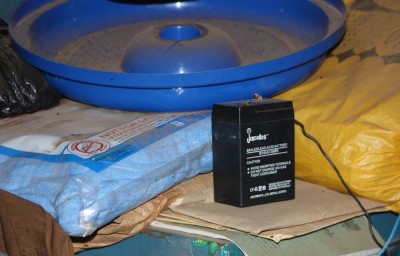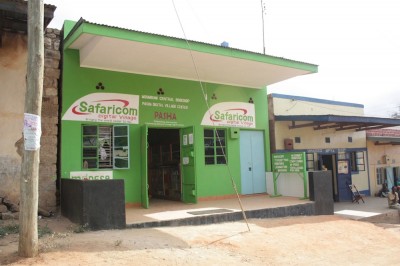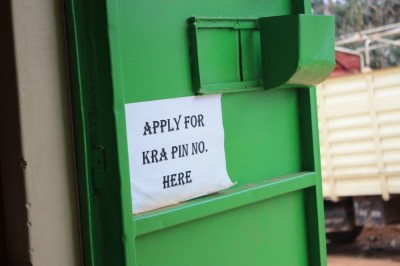Archive for the ‘rural’ tag
Four Things to Consider When Designing Small Solar Systems for Africa
If you are preparing to launch a solar lighting product in sub-Sahara Africa, especially Kenya, here are four things to consider based on my observations in Eastern Kenya earlier this year. No citations here, no scientific data just my thoughts.
- Tradeoffs will happen. Be on the right end of the tradeoff when it does. Usually these tradeoffs are not just price versus features but new thingymajigy vs status quo. Despite the trouble with kerosene, most consumers know how to cope with it. Save the customer time or money and you will be on the better side of the tradeoff. Time in getting a job done or money that is spent as a consequence of the existing solution (medical bills for children studying by kerosene lamps, burns, continued purchase of kerosene etc). If the payoff from your solar solution appears to require a long wait, you may already be on the wrong end of the tradeoff. Find a different benefit to present.
- Aspirations exist. Customers purchasing their first solar lighting product are moving up from kerosene to something cheaper to run. However, once they light up their house they begin to plan for the next electricity consuming device. A bigger radio and a television rank fairly high on the list of these customers. If your product can scale up with them to a point on that journey, they won’t feel they will have to write it off when they are ready for something bigger. Panels that form an array, charge controllers that can be replaced with bigger ones, the option to add batteries…these are some of the ways you can plugin to the customer’s aspirations and grow with them. A point to note; solar home system users in off-grid locations consider a grid connection once it becomes available despite the obvious cost benefit of solar power. A grid connection is considered a step up.
- Price isn’t everything. People like to show off their latest acquisitions, especially when these acquisitions translate into improved perceptions of their social status by their own peers. If your product is known for being cheap, that erodes the ‘brag-abilty‘ of it. Nokia mobile phones were very popular in the slums of Kibera despite not being the cheapest.
- Be part of an ecosystem. While showing off a solar product to residents of rural towns in Kenya earlier this year, they repeatedly asked what they would do with it if it needed repair. Because it features an LED light with integrated power storage, they immediately began asking how it would work with regular solar bulbs or readily available alternatives. They complained the panel was too small (they hesitated to classify it as a solar solution) and it worked with nothing else they that is readily available at their local electronics stores. Any one of those issues was a deal breaker. Play nice with others in the ecosystem and that includes other LED lights, batteries and fundis (local skilled technicians).
It seems to me that any firm selling a 5w-10w panel + 12v 60AH (or more) battery + easily available bulb is on the right path. Now if the solution allows additional panels to be integrated, a charge controller added and bigger batteries plugged in, you have a winner.
Government Services Intermediation: The New Role for Cybercafes.
Mbumbuni is a rural market town in Kenya’s Mbooni East District approximately 120km from Nairobi. Within the market is one of the Kenya ICT Board supported Pasha Centers and probably one of the best equiped cybercafes I have seen. When I visited the area in August of 2011, the 3G signal was poor and the center was using a GSM router connecting via EDGE to provide access to clients. The resulting experience was of course poor. For the residents in the area, the next cybercafe with a good connection is in Masii 8km away or in Wote town 50km away. For anyone wishing to register with the tax authority (a prerequisite to opening a bank account), a working cybercafe is the primary mode of accessing the authority’s online portal. There is no way of obtaining the registration at a KRA office. Cybercafes and Pasha centers charge an average of Ksh150 and as high as KSh250 to help clients complete the process and only a per minute charge for those savvy enough to login and do it themselves. For the residents of Mbumbuni, the Pasha center is their first option. Other options are guaranteed to be more expensive.
In the last four months I have travelled to parts of Kenya I only read about. Some of them almost 600 km away from Nairobi and others just an hours drive away. I have seen places where cybercafés are doing great and others where they are struggling to stay open. The landscape is varied but inspiring. Our estimates put the number of cybercafes in Kenya at approximately 2,500 most of them concentrated in the more densely populated parts of the country. Although statistics show a growing number of Internet users (35% of the population at last count), the vast number appear to be using their mobile phone as their primary gateway. Although feature phones can now provide 3G Internet access, play music and take pictures they still can’t print, scan or edit documents. With very low PC penetration in the country the rational decision is to therefore default to cybercafes for these tasks and others not yet available on mobile. Such as eGovernment.
The move by government departments and agencies such as the Kenya Revenue Authority to port services onto online spaces and then discontinue offline provision can be seen as a sign of progress. However, in using eGovernment to scale services fast across large areas at low cost, new barriers to access emerge. Digital barriers and cost barriers. These barriers have created new opportunities for cybercafé owners and Pasha center entrepreneurs allowing them to charge for a service that didn’t exist only a couple of years ago. The cyber café has now acquired a new role as an intermediary to government services introducing with it new costs of intermediation.
Whereas eGovernment presents a new opportunity for private enterprise in the form of new intermediation services, the government still needs to find ways of encouraging telcos to deploy better last mile connectivity (3G, LTE) to rural places where the financial investment may not achieve ROI in the short term. If poor connectivity remains a problem, the services may not be any closer to the people than they were before when the residents of Mbumbuni and Masii had to travel to Machakos, Wote or even Nairobi to get government services. In my opinion, there are three areas the Directorate of eGovernment and other actors in the space may consider giving priority as Kenya marches on into a fully digital future.
Better connectivity. Better 3G or LTE connectivity for the last mile to the cybercafes located in rural areas is a good place to start. Providing better connectivity could trigger consumption of data as people find utility for it. In places such as Maai Mahiu and Isinya we heard from a couple of people how frustrating spotty connections are. In Isinya, 40km from the city of Nairobi, residents opt to travel to Kajiado town or Kitengela rather than endure the local cybercafe’s unreliable connections.
Pricing Interventions / Guidelines. When intermediation services become high enough to become a bona fide barrier to access, there’s a problem. Ksh250 is enough to feed a family of four for a day or two. In areas where government services are only available online, this could mean that some families opt out of crucial government services they shouldn’t be having to do without. The initial premise is to bring services closer to the people. High financial costs neuter that objective. Introduction of price caps that keep it financially interesting for enterpreneurs to provide access to these services while remaining accessible to the majority of the people maybe an option worthy of some consideration.
Design for mGovernment. 24 million mobile devices are hard to ignore. Policy guidelines that allows government departments to design and deploy services on the mobile platform should be a priority in the short term. If bringing services closer to citizens is a priority, the mobile handset is as close as it can get.
As new formal intermediaries to government services begin to emerge with the rollout of new infrastructure and services, governments need to keep everyone in the ecosystem on the same page. Cybercafe owners need to remain motivated to provide the services, government departments need to create and train technical and customer care teams and citizens need to be educated on how to access and utilize these services.


